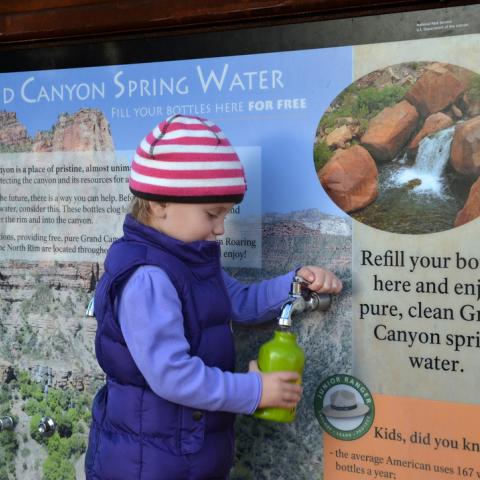
A year after a Canadian company acquired the rights to a Utah mine that holds deposits of cobalt, considered to be a "critical mineral," the Trump administration wants to open up more public lands for mining of critical minerals./Colter Hoyt
A day after the Trump administration announced its intent to be more aggressive in locating and permitted the mining of "critical minerals" such as cobalt, chromium, and lithium, Democrats in the House of Representatives pushed for passage of legislation that would protect Grand Canyon National Park and Chaco Culture National Historical Park from mining.
In touting the administration's initiative on Tuesday, Interior Secretary David Bernhardt said it "lays out a blueprint for America to once again be a leader in the critical minerals sector."
But in the House, U.S. Rep. Raúl Grijalva voiced concerns that the push for critical minerals, including uranium, would pose threats to Grand Canyon, Chaco Culture, and other "sensitive regions."
“We can’t keep going through these cycles of fighting over whether to protect the most sensitive places on Earth. We need to make a decision, here and now, that the Grand Canyon will forever be safe from the impacts of uranium mining,” Grijalva said on Tuesday when he introduced his Grand Canyon Centennial Protection Act. “That’s why I introduced this bill, and that’s why I’m moving it forward as chair of the Natural Resources Committee. It’s time to put an end to the questions around the Grand Canyon’s future. All of us are up here speaking today because we join in choosing the sustainable path.”
The bill calls for a permanent moratorium on new mining claims around the national park.
The debate over such protections dates to 2009, when then-Interior Secretary Ken Salazar placed a temporary moratorium on new mining claims on the landscape until threats to the canyon could be analyzed. Then, in 2011, the U.S. Bureau of Land Management recommended the "full proposed withdrawal of approximately 1 million acres of BLM and Forest Service lands located near the national park from mining claim location and entry under the 1872 Mining Law for 20 years, subject to valid exiting rights."
Secretary Salazar approved that move in January 2012.
Secretary Bernhardt this week directed the BLM to "undertake a comprehensive review of its permitting and land classifications, as well as its management plans." The goal, Interior said, is to quicken the time from permit application to actual mining. At the same time, the U.S. Geological Survey is moving to create a new nationwide program of surface and subsurface mapping – the Earth Mapping Resources Initiative – to identify prospects for critical minerals extraction.
Whether the administration's Federal Strategy to Ensure Secure and Reliable Supplies of Critical Minerals would impact national parks was not entirely clear. The document notes that national parks effectively "prevent or limit mining of mineral-rich lands." At the same time, it calls for the BLM, U.S. Forest Service, USGS and other stakeholders to "evaluate withdrawn or restricted areas for the presence of minerals."
"Any analysis performed should quantify and qualify the economic and national security implications of: reducing the size of an existing withdrawal, reducing the area affected by a land-use designation, changing planning allocations, or revoking an existing withdrawal," the document states.
On Wednesday, Democrats in the House pressed for passage of Grijalva's bill, as well as for Rep. Ben Ray Luján's Chaco Culture Heritage Protection Act, which calls for withdrawal of federal lands around New Mexico’s Chaco Culture National Historical Park from future oil and gas leasing.
During a hearing on his bill Wednesday, Grijalva questioned the Trump administration’s motivations: “This energy self-sufficiency dominance begs the question about how much we’re sending out of the country with no royalty being paid to the American taxpayer.”
A year ago, a Canadian-based mining company purchased the rights to a hard rock mine in Utah that shut down when President Clinton established the Grand Staircase-Escalante National Monument in southern Utah in 1996. However, President Trump's executive order to break up the Grand Staircase-Escalante National Monument redrew the monument boundaries in such a way that took the mine outside of it, thus opening it up for operations.
Among the ore deposits at the mine is cobalt, which is on the administration's list of critical minerals.




 Support Essential Coverage of Essential Places
Support Essential Coverage of Essential Places







Add comment